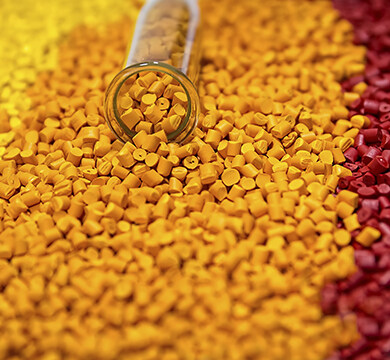Erreur de format d'e-mail
emailCannotEmpty
emailDoesExist
pwdLetterLimtTip
inconsistentPwd
pwdLetterLimtTip
inconsistentPwd

Offer Technical Support and Customized Solutions
The company is committed to creating new and improved plastic materials to meet the evolving demands of the market.

Choosing Between POM Plastic and ABS
Introduction
In the vast landscape of plastics, selecting the right material is crucial for optimal performance across various applications. This article delves into the nuanced comparison of two widely used plastics: Polyoxymethylene (POM) plastic material POM and Acrylonitrile Butadiene Styrene (ABS). From the automotive industry to consumer goods, the choice between POM plastic vs ABS can significantly impact the functionality and longevity of products.
Chemical Composition and Structure
Understanding the molecular foundations of POM material POM plastic and ABS lays the groundwork for their divergent characteristics. POM, a high-density crystalline thermoplastic, boasts exceptional chemical resistance due to its linear structure. In contrast, ABS, with its copolymer structure, combines the strength of acrylonitrile and butadiene with the versatility of styrene. This structural diversity gives ABS its unique balance of rigidity and impact resistance.
Physical Properties
In the realm of physical properties, POM and ABS exhibit distinctions that resonate in real-world applications. POM, with its notable density and hardness, finds favor in precision engineering components, offering resilience in the face of mechanical stress. On the other hand, ABS, known for its lower density, is a lightweight contender suitable for applications where minimizing weight is critical, such as in the production of consumer electronics.
Mechanical Properties
The mechanical prowess of POM and ABS diverges in stiffness, impact resistance, and fatigue tolerance. POM's exceptional stiffness makes it a preferred choice for components demanding structural integrity, such as gears and bearings. Meanwhile, ABS, with its commendable impact resistance, shines in applications where durability in the face of sudden force is paramount, as seen in protective casings for electronic devices.
Thermal Properties
As temperatures rise, the thermal properties of plastics come into play. POM's remarkable heat resistance makes it a contender for applications demanding stability under high temperatures, like automotive components. Conversely, ABS, while not as heat-resistant as POM, finds its niche in applications where moderate heat resistance coupled with impact resistance is essential, such as in household appliances.
Chemical Resistance
The chemical resistance of POM and ABS influences their applicability in diverse environments. POM, with its resistance to various substances, excels in industries where exposure to chemicals is commonplace, such as in the manufacturing of chemical processing equipment. ABS, while not as chemically resistant as POM, still holds its ground in environments where moderate chemical exposure is anticipated.

Manufacturing and Processing
The manufacturing processes of POM and ABS contribute to their suitability for different applications. POM's precision molding capabilities make it a favorite in industries requiring intricate components, such as medical devices. ABS, with its injection molding versatility, caters to the consumer goods sector, where mass production of aesthetically pleasing yet durable items is paramount.
Cost Considerations
Cost considerations play a pivotal role in material selection. While POM may incur higher raw material and production costs, its longevity and durability in specific applications can offset initial expenses. ABS, with its cost-effective production and widespread availability, often becomes the material of choice for budget-conscious projects without compromising on performance.
Applications
Real-world applications showcase the versatility of POM and ABS. POM's deployment in engineering components, coupled with its low friction properties, makes it indispensable in the automotive and aerospace industries. ABS, with its affordability and ease of molding, finds widespread use in consumer goods, ranging from toys to kitchen appliances.
Environmental Impact
In the era of sustainability, considering the environmental impact of materials is crucial. POM and ABS differ in their recyclability, with ABS generally being more recyclable. However, both materials pose challenges in terms of biodegradability, prompting industries to explore greener alternatives and recycling initiatives.
Recent Developments and Innovations
The dynamic landscape of materials science sees continuous advancements in POM and ABS technology. Innovations focus on enhancing properties such as biocompatibility, opening new possibilities in medical applications for POM, and improving ABS's recyclability to align with evolving environmental standards.
Conclusion
In the perennial debate of POM plastic vs ABS, the choice ultimately hinges on the specific requirements of the application. Whether it's the rigidity of POM for precision engineering or the impact resistance of ABS for consumer goods, understanding the nuanced differences is paramount. By considering factors ranging from chemical composition to environmental impact, informed decisions can be made, ensuring the optimal selection of POM or ABS for diverse industrial and consumer applications.

